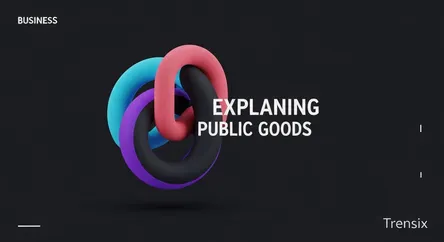Business
Explaining Public Goods

Discover public goods, services that are non-excludable and non-rivalrous. Learn why they are vital and how the free-rider problem affects them.
What is it?
A public good is a product or service in economics that is available to everyone and cannot be withheld from those who don't pay for it. It is defined by two key characteristics: non-excludability, meaning it's impossible to prevent anyone from consuming the good, and non-rivalry, meaning one person's use does not reduce its availability to others. Classic examples include fresh air, national defense, street lighting, and knowledge. Because private firms cannot easily profit from providing them, public goods are typically funded and managed by the government through taxation.
Why is it trending?
The concept of public goods is always relevant but trends during major societal debates. Discussions around climate change (clean air as a global public good), public health crises (vaccine research and distribution), and digital infrastructure (open-access internet) have brought the term to the forefront. These modern challenges highlight the need for collective action and government intervention to provide essential services that the free market would otherwise under-produce, prompting renewed economic and political analysis of their importance and funding.
How does it affect people?
Public goods form the bedrock of a functional society and directly impact everyone's quality of life. They provide widespread benefits that individuals couldn't secure alone. For example, national defense protects all citizens, and public sanitation prevents the spread of disease. However, this leads to the "free-rider problem," where some individuals benefit without contributing. To overcome this, governments use tax revenue to fund these essential services, ensuring everyone contributes to and benefits from the roads, public parks, and legal systems that support economic activity and social well-being.